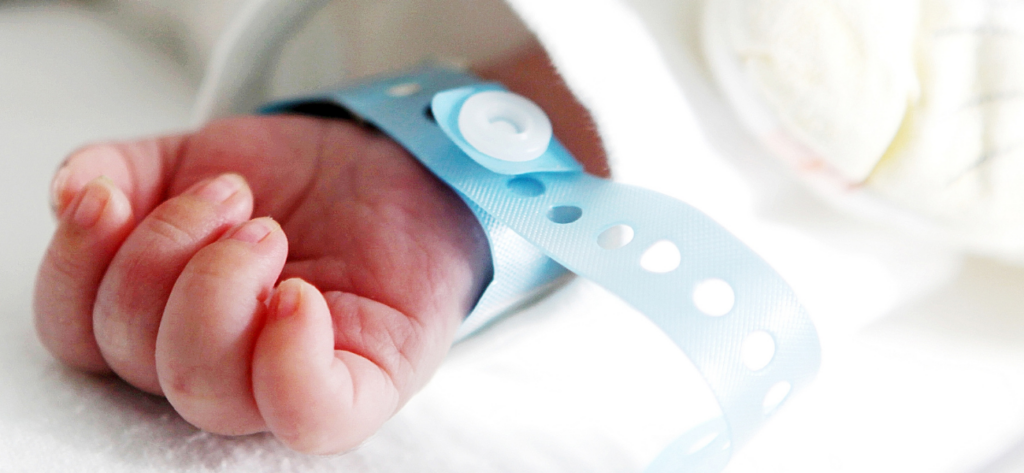Chicago Birth Injury Lawyer
Injuries suffered at birth can be severely life-altering for both the child and the mother. At Levin & Perconti we understands that your immediate goals are to get your medical bills resolved, and ensure that your insurance company will pay for any future treatment relating to your child’s injury. Our experienced birth injury attorneys can discuss your situation and explain the options available to you, as well as work with insurance companies and other parties involved in your case to assure that you and your baby’s needs will be resolved expediently and appropriately.
- About Our Birth Injury Lawyers
- What Is a Birth Injury?
- Common Causes of Birth Injuries
- Common Types of Birth Injuries
- U.S. Birth Injury Statistics
- Legal Action for a Birth Injury
- Why Should I Hire a Birth Injury Lawyer?
- What Compensation Can I Recover in a Birth Injury Case?
- Levin & Perconti Can Litigate Birth Injury Cases in Multiple States Across the U.S.
- Notable Birth Injury Settlements
- Frequently Asked Questions (FAQs) About Birth Injuries
- Levin & Perconti Can Help After Your Child’s Birth Injury
- Testimonials
A newborn child is every parent’s pride and joy. So, when your physician or delivery staff fail to meet the standard of care and commit medical errors that cause serious birth injuries or your infant’s death, it can be a devastating experience.
You’ve waited approximately nine long months to hold your baby, only to have your joy interrupted by someone else’s negligence, lack of professionalism, or preventable harm. We know how heart-wrenching it can be for your little one to suffer due to often avoidable medical mistakes made during the pregnancy or birthing process.
Although you can’t undo the harm someone’s negligence or wrongdoing caused to your infant and family, it’s important to hold the right people accountable for the financial and emotional suffering resulting from your child’s birth injury. As a parent or guardian of the injured child, you have the right to fair compensation to help offset the short- and long-term costs accompanying the unfortunate and unforeseen incident.
About Our Birth Injury Lawyers
Dov Apfel and Seth Cardeli are two of the leading birth injury attorneys in the nation. They have litigated cases throughout the United States and at the federal level, and are passionate advocates for the families they represent. Dov Apfel is nationally known for his high level of medical knowledge, and acts as a resource for attorneys, judges, and healthcare providers throughout the country. He has been practicing in the field of birth injury for over 40 years and was the recipient of the Dan Cullan Memorial Lifetime Achievement Award presented by the AAJ Birth Injury Trauma Litigation Group in 2011. Apfel and Cardeli have presented at dozens of educational events and written for numerous publications. In 2020, they secured one of the top five highest medical malpractice settlements in the nation.
What Is a Birth Injury?
A birth injury is any form of harm to a baby during the pregnancy, labor, delivery, or after delivery. Some injuries tend to be minor and leave no long-term impacts, while others are severe and can cause permanent disabilities, affecting the child’s physical, emotional, and cognitive capabilities.
If medical professionals fail to comply with the standard of care, and their negligence results in a birth injury, they may be held responsible.
Common Causes of Birth Injuries
Birth injuries can be the result of a health care providers’ wrong or negligent actions or inactions that lead to complicated and unsafe birthing experiences. The most common causes of birth injuries include:
Birth Asphyxia
Asphyxia during the birthing process affects a baby’s brain and other vital organs due to essential oxygen and nutrient deprivation happening before, during, and immediately after delivery. This lack of oxygen leads to acid buildup in the cells, potentially causing far-reaching damage like brain injuries and cerebral palsy (CP).
Birth Trauma
When excessive pressure or torsion is applied to the baby’s head or body, it’s more likely to cause birth trauma. This added damaging pressure often occurs due to an overuse of delivery drugs, inept handling of labor, inappropriate use of forceps or vacuum, and other delivery complications contributing to lengthy and stressful births.
Viral and Bacterial Infections
When delivered vaginally, an infant is in direct contact with their mother’s birth canal during labor and delivery, exposing them to viruses and bacteria hosted in the mother’s body. While most of these maternal viral and bacterial strains are harmless, some are especially infectious and dangerous to newborns, affecting their brain and surrounding membranes, lungs, and spinal cord.
Generally, physicians must screen the mother for various infections as a part of routine prenatal care. Failing screen and/or treat for infection can make them liable for birth injuries resulting from preventable infection transmission from the mother to her infant.
Improper Prenatal Care
Medical professionals should always provide the acceptable standard of care, including prenatal care, involving performing routine ultrasounds and other tests to detect and remedy potential medical risk factors before they lead to complications. Proper prenatal care also includes adequately controlling existing maternal medical conditions (e.g., high blood pressure and diabetes) and ensuring the mother’s physical and mental safety by monitoring her medications, assessing her overall well-being, and evaluating her environment.
Failing to provide proper prenatal care may result in harm to both the mother and the infant, including premature rupture of membranes, placenta previa, umbilical cord issues, abnormal or restricted fetal growth, and other complications leading to birth injuries and possible neonatal or maternal death.
Untreated or Mistreated Maternal Medical Conditions
As mentioned briefly above, maternal medical conditions left untreated or improperly treated can increase the risk of birth injuries. Therefore, regular screening and treatment are important to prevent serious outcomes.
The following maternal medical conditions can make a pregnancy high-risk, meaning both the mother and the baby may need extra monitoring and care to prevent birth injuries and death.
- Cardiovascular problems affecting the heart and blood vessels
- Diabetes
- High blood pressure
- Obesity
- Certain infections, including urinary tract infections (UTIs), human immunodeficiency virus (HIV), human papillomavirus (HPV), tuberculosis (TB), viral hepatitis, and other sexually transmitted infections (STIs, previously referred to as STDs)
- Blood clots
- Bleeding
- Anemia
- Severe nausea and vomiting (hyperemesis gravidarum)
- Mental health conditions, including depression and anxiety
Medical Errors
Common medical errors leading to birth injuries include:
- Prescribing medication to the mother with dangerous side effects or known risks to the developing fetus
- Misusing the vacuum extractor or forceps during labor
- Administering the wrong medication
- Failing to respond promptly to maternal medical emergencies, such as bleeding
- Failing to respond to changes in the fetal heart rate or fetal distress
- Miscommunications between physicians and nurses
- Premature delivery complications
- Delaying the performance of a C-section

Common Types of Birth Injuries
Various actions of hospital or birthing facility staff, including those of the doctor, can lead to birth injuries that differ in their level of severity, treatability, and long-term prognoses. Your baby’s condition might lead to ongoing risks and complications in other situations, requiring future surgeries, full-time care, and ongoing treatment. Some birth injuries can cause the untimely death of your newborn.
Common birth injuries include:
Hypoxic-Ischemic Encephalopathy (HIE)
A fetal brain needs sufficient oxygen and blood flow as it develops and as it transitions to life outside the womb. If insufficient oxygen supply or blood flow is allowed to occur for an extended period of time, it can lead to various types of brain damage affecting the white matter or deep grey matter and may manifest as hypoxic-ischemic encephalopathy (HIE), epilepsy, periventricular leukomalacia (PVL), and more. In some cases, the lack of oxygen and blood flow can be deadly.
Newborn brain damage resulting from injuries at or around the time of birth is often permanent, debilitating, and requires extensive and costly treatment. Many newborn babies diagnosed with HIE are treated with therapeutic hypothermia (cooling) to limit the extent of potential brain damage.
Cerebral Palsy (CP)
Some children diagnosed with HIE may be diagnosed with cerebral palsy (CP) as the physical symptoms of their brain damage become more apparent. CP is a condition that limits a child’s ability to control their muscles, restricting movement, balance, and posture. The effects of the disorder originate from damage to or abnormal development of the brain. This injury to the brain can result from birth trauma, infection (e.g., meningitis), oxygen deprivation, or other birth injuries or complications, especially impacting the head.
There are different types of CP, and symptoms vary widely from one individual to the next depending on the type and degree of brain injury, with some unable to walk without assistive devices. CP doesn’t progress over time, but a person’s symptoms can change or become more or less apparent with age and further development. Additionally, many people with CP experience related conditions, including seizures, vision and hearing problems, intellectual disabilities, spine problems, such as scoliosis, or problems with their joints.
There’s no cure for CP, but early intervention, certain medications, surgeries, medical devices, and different types of therapy can help manage the condition and improve some individuals’ functioning and quality of life.
Brachial Plexus Palsy (Erb’s Palsy)
The most common type of brachial plexus palsy is Erb’s palsy, named after the doctor who first diagnosed the condition. It affects the shoulder and elbow muscles and impacts approximately one to two of every 1,000 babies. It’s often the result of a difficult birth, leading to the improper bending or stretching of the newborn’s head and neck. Circumstances that can increase an infant’s risk of brachial plexus palsy include:
- Untreated or improperly treated maternal diabetes
- Abnormal position of the baby (e.g., breech)
- Large for gestational age baby (or macrosomia)
- Operative vaginal delivery (forceps or vacuum)
- Pushing on the top of the mother’s stomach during delivery (fundal pressure)
- Excessive pulling on the baby’s head during delivery
- Bending of the baby’s head and neck during delivery
The brachial plexus is a tangle of nerves near the neck that send signals to the nerves in a person’s arms, extending from the shoulders to the fingers to help control their arm muscles. Damage to the nerves of the brachial plexus results in brachial plexus palsy, a condition leading to partial or total paralysis affecting a child’s arm movement. Total plexus palsy results in restricted or complete loss of muscle functioning in the arm, hand, and wrist.
If a child’s injury persists after physical and occupational therapy, they might need surgery to repair the nerves and regain feeling and movement in their arm.
Head Trauma
Newborn head trauma resulting from the birthing process can include extracranial (outside the skull) and intracranial (inside the skull) injuries. Damage can be wide-ranging in severity, from minor bruising and swelling to serious internal brain bleeds and fractures.
The misuse of forceps or vacuum extractors during delivery, aggressive contractions, trouble pushing the baby through the birth canal, and various other birth complications putting excessive pressure on the newborn’s skull can lead to head trauma in your child.
Your infant’s prognosis depends on the specific head injury and timely course of treatment. For example, intracranial hemorrhages can be deadly if not promptly and appropriately treated. Some instances of head trauma are resolvable within a few weeks or months, while other injuries to the head can have long-term consequences.
Spinal Cord Injuries
Spinal cord injuries in your newborn are often the result of medical malpractice during the birthing process or before birth. These serious injuries can happen when doctors use aggressive maneuvers, twisting and pulling the baby to compel a quick birth when complications are present, such as problems with the umbilical cord leading to oxygen scarcity. Your doctor also might apply extra force on the spinal cord during your delivery if they use tools, such as vacuums and forceps, improperly.
Most spinal cord injuries are immediately apparent. However, sometimes an injury can take several minutes to days to manifest physically or outwardly. Newborns suffering from a spinal cord injury might seem floppy or lack muscle control in their limbs. They can also experience a loss of bladder and bowel function, breathing problems, muscle spasms, and a lack of reflexes.
Spinal cord injuries are severe injuries often causing permanent damage. Immediate treatment and intervention are necessary to prevent any worsening of the condition. Surgeries and different therapies might be needed to mitigate the effect of the injury and provide a more hopeful prognosis. Extensive lifelong care and medical attention are a possibility.

U.S. Birth Injury Statistics
The Centers for Disease Control and Prevention (CDC) compiled the following statistics about births, infant health, birth injuries, and deaths nationwide in 2019:
- Number of births: 3,747,540
- Number of infant deaths: 20,921 or 0.6% of all births
- 6.1% of infant deaths were caused by accidents or unintentional injuries
- 6% of infant deaths were caused by maternal complications of pregnancy
- 3.5% of infant deaths were caused by complications involving the placenta, cord, and membranes
- 1.7% of infant deaths were caused by necrotizing enterocolitis (NEC), an intestinal disease affecting primarily premature or low birth weight newborns
- 8.31% of births involved infants with low birth weights less than 5.5 pounds
- 10.23% of births were preterm or less than 37 weeks’ gestation
- 31.7% of infants were born by cesarean delivery
- Birth defects affect one in every 33 babies (about 3% of all babies) born in the United States each year.
- About 1 in 345 children in the United States have been diagnosed with cerebral palsy, according to 2010 estimates from CDC’s Autism and Developmental Disabilities Monitoring (ADDM) Network.
- Brachial plexus injuries occur in up to 2.5 per 1,000 live births.
- Facial nerve injuries occur in up to 10 out of every 1,000 live births.
- Cephalohematoma occurs in up to 2.5% of all deliveries and is more common in deliveries involving vacuums or forceps.
Legal Action for a Birth Injury
Birth injury litigation comes about when a baby suffers an injury either before birth or during the birthing process because of careless, negligent, or intentional acts on the part of a doctor, nurse, healthcare provider, hospital, or other medical staff or facility. When actions of this nature injure a baby, but do not constitute a criminal act, they are referred to as a “tort”, and these civil wrongs can form the basis for a lawsuit.
When a court determines that a person is legally responsible for causing injury to another they are held liable for that injury, at which point they can be made to pay compensatory damages to the person who was injured. Compensatory damages are restitution that is intended to leave a person in the position that they would have been in had not the injury occurred; they compensate a person for their losses.
In cases such as birth injury litigation that involve young children this restitution can be substantial, including past medical expenses, money to cover medical care that will be needed in the future, disability, disfigurement, pain and suffering, and money to provide restitution for loss of a normal life, and the loss of future potential earnings. Determining the figures that will fairly compensate for damages such as these is always difficult, but when a case involves babies and small children the number of factors to be taken into account and the economic calculations (such as inflation) make it vitally important for a parent to seek the counsel of an attorney or law firm with experience in this specific kind of litigation.
Video: Steven Levin answers the question – What Are Birth Injury Lawsuits?
Why Should I Hire a Birth Injury Lawyer?
If your child suffers an injury due to a physician’s negligence or malpractice, you might be able to recover compensation for your physical, emotional, and financial damages. It’s important to have a birth injury lawyer by your side to help you navigate your available legal options, collect the necessary evidence to support your claim, prepare the required paperwork to initiate a lawsuit, and file your case appropriately and timely.
A birth injury lawyer from Levin & Perconti can provide you the following services:
Free Case Evaluation
You can schedule a free, no-obligation consultation with our birth injury attorneys. The highly confidential consultation lets us gather all the details about your child’s birth injury to build a robust case against the negligent hospital, birthing facility, or health care provider. We’ll also help you understand your legal rights and decide the best course of action for you and your family.
Comprehensive Claim Investigation
Our legal team takes no chances when getting to the bottom of your baby’s birth injuries. Upon signing a release form, we’ll dive deeper into an analysis of your medical records covering your pregnancy, birth, and postnatal care. We might also engage medical experts to reconstruct the birth injury and interview witnesses to shed more light on how the damage happened.
Filing a Lawsuit
If medical experts determine that your baby’s birth injuries occurred as a result of negligence by a hospital, birthing facility, or health care provider, we’ll proceed to file a lawsuit with the appropriate state or federal court.
Discovery
Once a birth injury lawsuit is filed, we can engage in discovery to uncover additional evidence about why the hospital, birthing facility, and/or health care provider provided negligent care to you and your baby. This discovery will include document and record requests, depositions of the parties, depositions of fact witnesses, and expert disclosures and depositions. During the discovery phase of the lawsuit, we use our extensive knowledge of birth injury litigation to put together the strongest case possible.
Settlement Negotiations
We are trial lawyers first. However, sometimes in litigating birth injury cases, the opposing party will request that we engage in settlement negotiations to avoid the risk to both parties of going to trial. If such negotiations are successful and the opposing party is willing to pay fair compensation, then the case may be resolved at this point in the process.
Preparing for Trial
If the defendant refutes their liability, the next step would be to take your case to trial. Our trial attorneys are always ready to represent you and fight for your justice. We’ll formulate the strongest case possible by presenting witness testimonials and expert-based exhibits, proving that your child’s birth injury resulted from the defendant’s negligence.
Collection and Disbursement of Funds
If the jury determines that the defendant was responsible for your child’s birth injury, it’ll award compensation equivalent to the financial and emotional damages you’ve suffered. Our birth injury attorneys will work quickly to collect and transfer the payment to your account as soon as possible. We’ll also resolve any liens connected to your recovery.
What Compensation Can I Recover in a Birth Injury Case?
You can recover both economic and non-economic damages in a birth injury case. Depending on the state in which the delivery occurred, the types and amount of damages available may differ.
Economic damages include actual monetary or easily calculable losses, such as:
- Medical costs stemming from the injury
- Future medical and rehabilitation expenses
- Lost wages for missed work to care for your infant
- Caretaking expenses if you have to hire a professional caregiver
- Special education costs
- Special care equipment
Non-economic damages include non-monetary losses or harm, such as:
- Pain and suffering
- Loss of enjoyment of life
- Mental frustration
- Physical deformity
- Increased risk of future harm
- Shortened life expectancy
Some cases also allow for the imposition of punitive damages intended to punish the wrongdoer for egregious actions. Limits on punitive, or exemplary, damages may vary state-by-state.
Levin & Perconti Can Litigate Birth Injury Cases in Multiple States Across the U.S.
Our birth injury lawyers have helped families of injured newborns nationally to secure settlements and receive civil justice for physician and hospital negligence during pregnancy and delivery. Levin & Perconti, with the assistance of co-counsel in numerous states, can handle your birth injury case in the following states:
- New Jersey
- New Mexico
- New York
- North Carolina
- Ohio
- Oregon
- Pennsylvania
- South Carolina
- Tennessee
- Texas
- Vermont
- Virginia
- Washington
- Wisconsin
Notable Birth Injury Settlements
Levin & Perconti has handled numerous birth injury cases over the years, securing several significant settlements and awards, including:
Verdict
$29 Million
Settlement
on behalf of a child who suffered brain damage and other injuries after a delayed cesarian section
$20 Million
Verdict
on behalf of a child who suffered preventable HIE and asphyxia injuries at birth, resulting in permanent cognitive and developmental impairments.
$14 Million
Settlement
against a Chicago hospital that failed to respond to fetal monitoring promptly after it detected nonreactive fetal heart tracings and schedule a timely C-section, leading to a lack of oxygen in the infant and subsequent brain injury
$11.5 Million
Settlement
in a FTCA settlement for active-duty parents of a child birthed at the U.S. Naval Hospital in Guam, suffering a catastrophic hypoxic-ischemic brain injury after a negligent neonatal resuscitation and intubation
$9 Million
Settlement
$6.71 Million
Settlement
against a hospital that trusted an inexperienced resident with performing a vaginal delivery of a breech presentation, resulting in brachial plexus and shoulder dystocia
$6.5 Million
Settlement
for a young girl who suffered a brain injury during birth due to the physician’s failure to perform a timely C-section
$8 Million
Settlement
for the family of a now 9-year-old boy who was born with a hypoxic brain injury as a result of a delayed C-section given at a Chicago hospital.
$6.5 Million
Settlement
for a child who suffered a brain injury due to a hospital’s failure to provide appropriately trained health care providers to perform a neonatal resuscitation
$3.5 Million
Settlement
$2.9 Million
Settlement
Frequently Asked Questions (FAQs) About Birth Injuries
As an expectant or new parent, you likely have many questions and concerns about birth injuries, including what they are, how to avoid them, and what to do if your child suffers from one. We want to provide you with much-needed answers and guide you on how to best protect or support your family through this overwhelming and worrisome time.
You have a right to ask your health care provider questions and demand proper medical care for you and your unborn child. If you feel like you’re receiving poor medical treatment or prenatal care, you can hold your physician or birthing facility accountable by reporting your concerns to hospital administration or various medical boards. You can also do your part by following your doctor’s recommendations for the health and well-being of yourself and your child.
A birth defect or congenital disability is a health condition or abnormality that forms while the infant is still in the womb. Doctors must report these conditions to the expectant parents before delivery. Although birth defects can be unavoidable, your health care provider should take appropriate actions or provide necessary medical care to mitigate the effects or harm caused by a birth defect when possible. Contrarily, a birth injury usually occurs just before or during labor or at or around the time of delivery and is often preventable and caused by a physician’s or medical staff’s negligence.
If your newborn exhibits the following signs and symptoms, they’ve most likely sustained a birth injury:
- Swelling, bruising, or abrasions
- Seizures within 48 hours of birth
- Loose or limp arms
- Failure to begin breathing immediately after delivery
- The infant’s need for a breathing tube or resuscitation after delivery
If you see any behaviors or symptoms in your infant that seem abnormal or “off,” including difficulty eating, swallowing, or breathing, it’s a good idea to have them evaluated by a pediatrician or other medical professional.
What Evidence Strengthens a Birth Injury Case?
Levin & Perconti Can Help After Your Child's Birth Injury
At Levin & Perconti, we’re a team of highly skilled and committed birth injury lawyers who fight to ensure you receive maximum civil justice for your child’s and your family’s injuries. We don’t hesitate to hold negligent people accountable, and we settle for nothing less than fair compensation for your emotional and financial suffering.
Complete our contact form today, and one of our attorneys will call you promptly to discuss your case and determine your legal options.
Also read:
Testimonials
Not only were they so professional but also so caring and thoughtful. It was very difficult going over the facts in our mother's case but they were so compassionate and understanding and allowed us to be with them every step of the way. We were able to sit in on the depositions and we were really able to see how hard they worked on our behalf.
During that time, my family and I suffered the loss of my mother. Mr. Levin and Mr. Perconti were more than just our lawyers. Words can’t really express our gratitude.
They were most patient and responded timely to many questions throughout the entire process. All demonstrated professionalism and extensive knowledge of case and state laws. Their in-depth investigative work uncovered details which were unknown to us and yet sadly confirmed our suspicions. We would recommend the Levin and Perconti Law firm and especially this team.
During that time, my family and I suffered the loss of my mother. Mr. Levin and Mr. Peconti were more than just our lawyers. Words can’t really express our gratitude. My family and I will always be grateful for the compassion that they showed us. I want to thank you for what you did for my family, and for always being there for us.
Margaret’s representation, guidance, and professionalism gave us the sense that we could put our trust in Levin & Perconti and the final outcome proved that to be true.
Legally Reviewed by

Dov Apfel
Contact Us
- Free Consultation
- (312) 332-2872
"*" indicates required fields
Related Pages
- Birth Injury Lawyer
- Birth Asphyxia
- Brachial Plexus Injury
- Breech Birth Complications
- Cerebral Palsy
- Erb's Palsy
- Gestational Diabetes Misdiagnosis
- Hypoxic-Ischemic Encephalopathy (HIE)
- Neonatal Seizures
- Oxygen Deprivation
- Preeclampsia Misdiagnosis
- Shoulder Dystocia
- Statute of Limitations by State
- Stillbirth Lawsuit
- Umbilical Cord Compression
- Untimely C-Section
- Vacuum Extraction Injury
Notable Results
SETTLEMENT
for the family of a child who suffered brain injury due to lack of oxygen during her birth
SETTLEMENT
for a child who suffered brain damage causing cerebral palsy as a result of a family practice physician's failure to perform a timely C-section
VERDICT
for a child who died as a result of a doctor’s failure to diagnose the mother with an immune disorder while pregnant
Birth Injury Awards
In 2024, Michael Bonamarte, Seth Cardeli, and Cari Silverman won the Trial Excellence award at the Jury Verdict Reporter reception and awards ceremony for their groundbreaking $40 million verdict on behalf of a client who suffered a birth injury. This is the highest ever reported medical malpractice verdict outside of Cook County, IL at the time of reporting and the highest ever verdict in Coles County.
Our Office
325 N LaSalle Dr Suite 300
Chicago, IL 60654
312-332-2872

